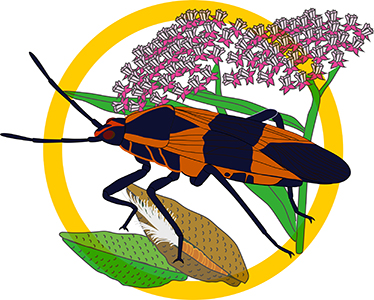 Bugs In Our Backyard is an educational outreach and collaborative research program, providing project-based learning opportunities for K-12 students– or anyone! The core activity for BioB takes advantage of the bugs in your own backyard, schoolyard or neighborhood. Students can become citizen-scientists by surveying this diversity of insects and plants.
Bugs In Our Backyard is an educational outreach and collaborative research program, providing project-based learning opportunities for K-12 students– or anyone! The core activity for BioB takes advantage of the bugs in your own backyard, schoolyard or neighborhood. Students can become citizen-scientists by surveying this diversity of insects and plants.
A series of modular activities on different life science topics, such as biodiversity, growth and development, invasive species, genetics, insects, evolution, urban ecology and statistical analysis, are being produced. These modules can be scaled to the needs of different classes and grade-levels or used over multiple grade-levels. For older students, survey data are available to be used in hypothesis-testing or exploratory analyses. Teachers are encouraged to modify the activities to their own needs and share success stories.
BioB is part of an NSF-funded research program at Colby College, which will also provide students with insight into the practice of science. Our goal is to engage students with biology by making them citizen scientists. Get involved in ecological surveys of local bugs and their host plants.
These surveys are looking for answers to different biological questions. How do variations in wing development affect the range expansion of soapberry bugs? Do insects on milkweed crowd each other out? What differences exist in the boom-and-bust population dynamics of native boxelder bugs and introduced brown marmorated stink bugs? How does insect diversity vary over time? How does insect diversity vary across geographic and urban scales? These are some of the questions that can be asked. The data produced by the project contribute to a growing community database. Connect to the biological diversity in your own backyard!
The surveys target “true bugs” (what entomologists call Heteroptera) in the eastern US, but open-ended activities are also available. Everyone is welcome to get involved. Let’s expand what we know about about insect diversity across rural and urban landscapes!

Is your school in a city? Think your neighborhood is too urban for ecology or biodiversity? — Think again.
The data gathered by our participants will be shared for everyone to analyze, as a part of supplemental learning modules. BioB is part of a larger study on the development of wing length variation in soapberry bugs, supported by the National Science Foundation. These bugs have expanded their range dramatically in there last 70 years, as they have adapted to feeding on introduced, invasive plants. Soapberry bugs can also grow to be adults with either long or short wings. Only long-winged bugs can fly and expand the bugs’ range. Therefore, by collecting data on the distribution of bugs and their wing lengths, we can better understand if and how wing-length variation has been involved in dispersal.
 Learning modules will also provided enrichment for core life science topics, using the soapberry bug and the field surveys students have made, as a jumping-off point. In this way, teachers can build a series of activities with BioB, or just make it a one-time event. How ever they participate, students become involved in a large-scale research project and connect to the animals and plants all around us!
Learning modules will also provided enrichment for core life science topics, using the soapberry bug and the field surveys students have made, as a jumping-off point. In this way, teachers can build a series of activities with BioB, or just make it a one-time event. How ever they participate, students become involved in a large-scale research project and connect to the animals and plants all around us!
Interested?
 Are you are a science educator? or just interested in the biology of your backyard? The “About the bugs” tells the tale of Florida’s red-shouldered soapberry bug, our own favorite bug. Our Blog and Twitter feed will update you with news on the BioB project, provide new supplemental background on a range of life science topics, as well as ideas and activities related to biology and education. And other fun stuff!
Are you are a science educator? or just interested in the biology of your backyard? The “About the bugs” tells the tale of Florida’s red-shouldered soapberry bug, our own favorite bug. Our Blog and Twitter feed will update you with news on the BioB project, provide new supplemental background on a range of life science topics, as well as ideas and activities related to biology and education. And other fun stuff!
Please, sign up for e-mail or RSS notification of new posts in the boxes to the right. Follow @Jhaematoloma on Twitter, or connect with us on FaceBook.
Get involved!
 Science is an interactive, DIY process. Students, teachers, and interested folks of all ages are welcome to participate in the BioB project by commenting on blog posts and submitting data on local bug diversity. If you’re a teacher, check out the teaching materials found under the Modules tab.
Science is an interactive, DIY process. Students, teachers, and interested folks of all ages are welcome to participate in the BioB project by commenting on blog posts and submitting data on local bug diversity. If you’re a teacher, check out the teaching materials found under the Modules tab.
Let us know what you find in your backyard!




